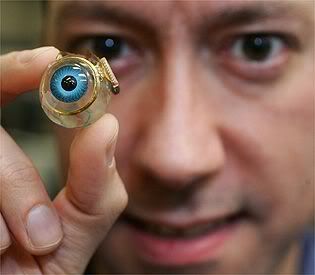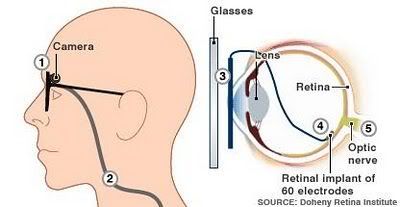In the past few decades bio-technology have been the fastest growing area of scientific research, with new bio-tech devices used in clinical trials. We all know that (?) a group of researchers have been working on bionic eye, which can be used to give sight for blind and visually impaired persons. Now a group of researchers have created the first microchip, which will power the first functional bionic eye.

A bionic eye usually have the following parts
- A digital camera that’s built into a pair of glasses. It captures images in real time and sends images to a microchip.
- A video-processing microchip that’s built into a handheld unit. It processes images into electrical pulses representing patterns of light and dark and sends the pulses to a radio transmitter in the glasses.
- A radio transmitter that wirelessly transmits pulses to a receiver implanted above the ear or under the eye
- A radio receiver that sends pulses to the retinal implant by a hair-thin implanted wire
- A retinal implant with an array of 60 electrodes on a chip measuring 1 mm by 1 mm

But this technology has been without a breakthrough for a very long time. Now with the help of this new microchip, the retinal implant of the bionic eye has come much closer.
According to a New South Wales release,Gregg Suaning, project leader and associate professor with Graduate School of Biomedical Engineering, University of New South Wales, has the following to say,
“This is a remarkable new microchip that has brought a retinal implant much closer to reality, “
“At only five square millimetres, the device is tiny but represents a significant advance in nerve stimulation technology,”
“The design team incorporated never-before attempted features with this design and absolutely nailed every aspect,”
Bionic Vision Australia director Anthony Burkitt said,
“This microchip is at the heart of the retinal implant which stimulates the retinal cells to elicit vision.”
Now with this advance we can hope, we can see a major break-through in Bio-Technology field.
